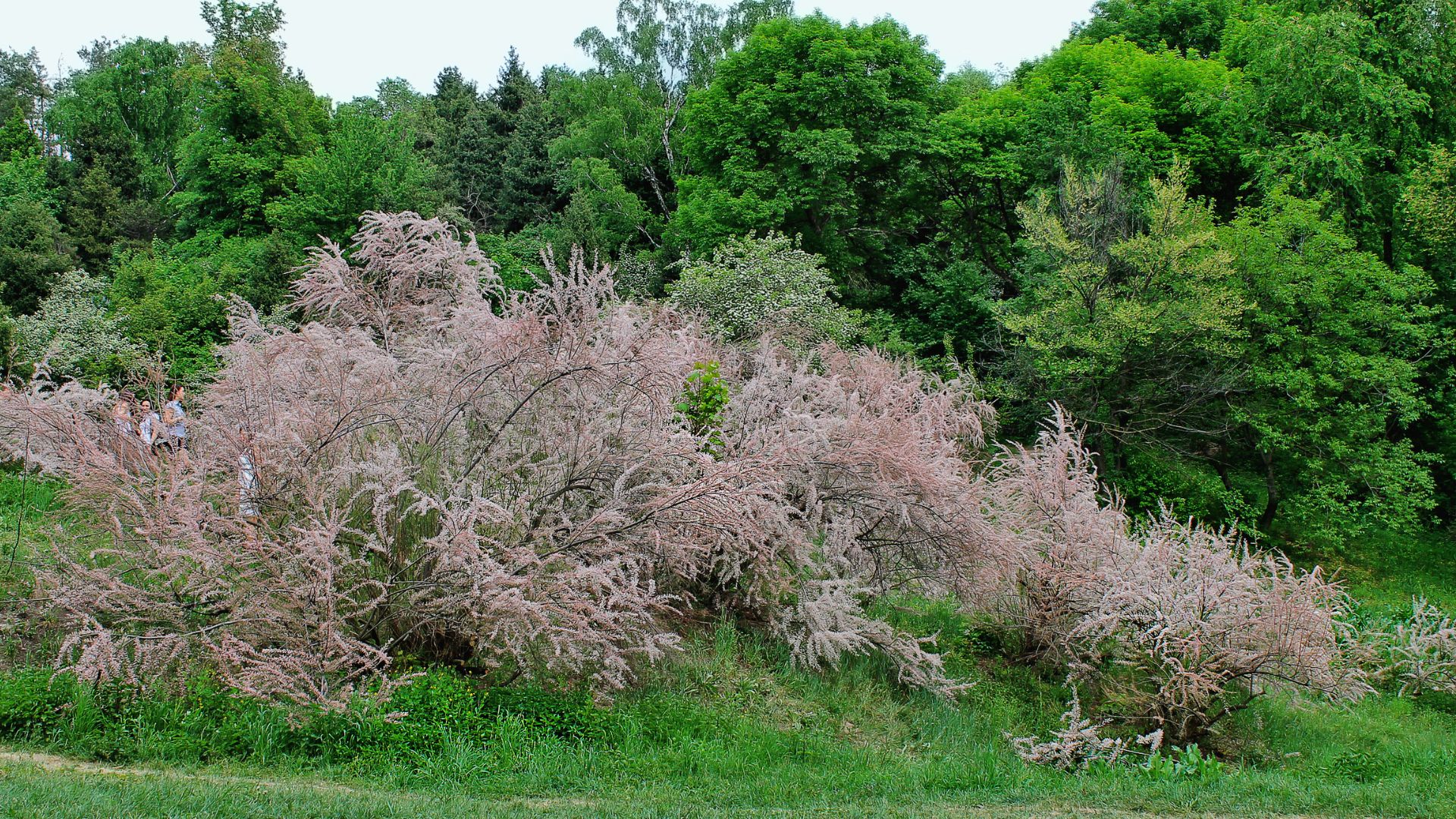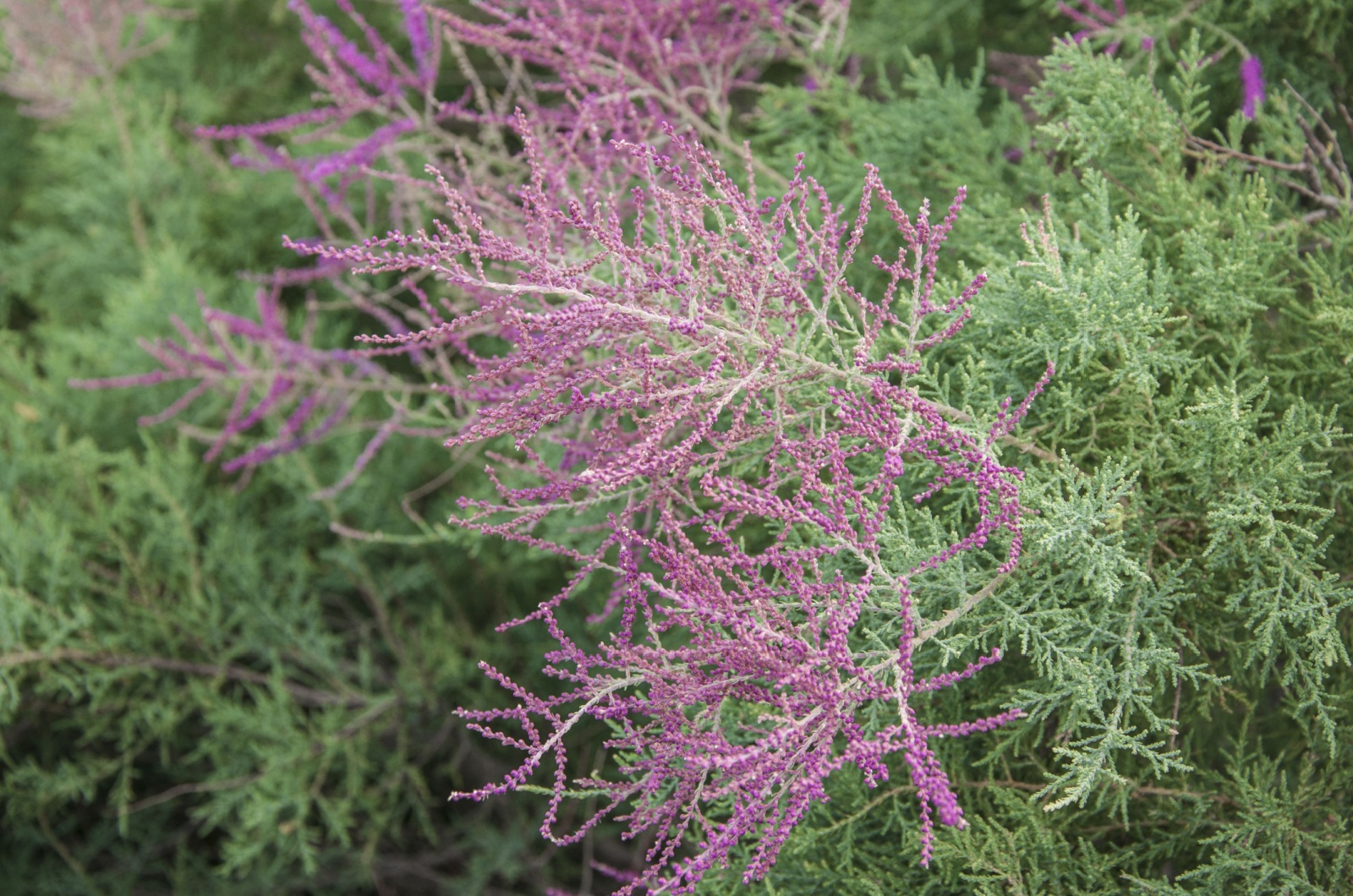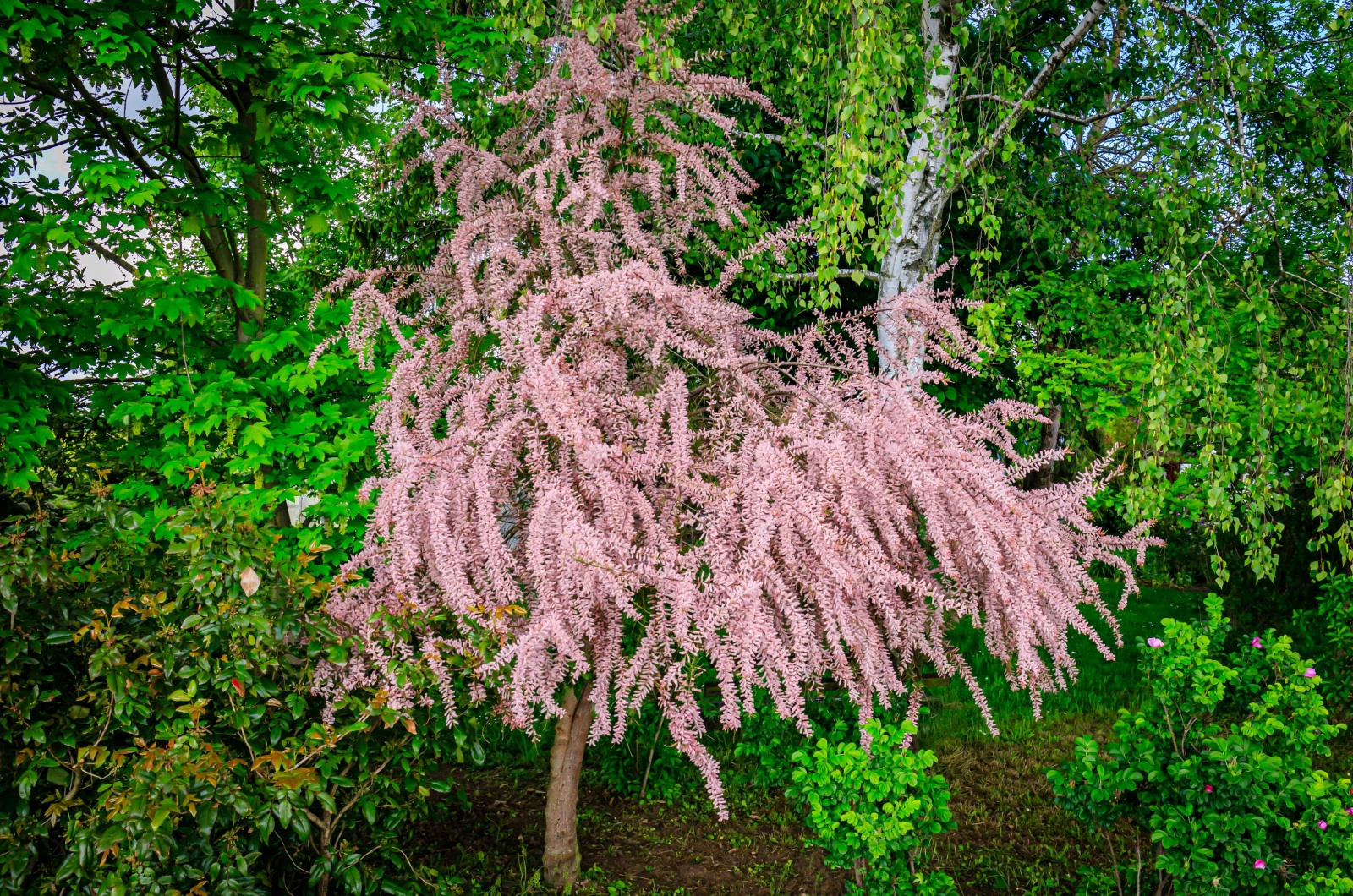As a guest from Europe and Asia, tamarisk quickly became the “it” plant among American gardeners thanks to its reddish bark and pinkish-white flowers.
I always love trying new gardening trends, so I decided to grow tamarisk, hoping it would be the star of my backyard. Little did I know, I was growing a plant that would soon take over everything!
Tamarisk is tough. Its deep roots and salt-tolerant leaves help it thrive where other plants can’t. It spreads faster than I ever imagined. And before I knew it, my garden was dominated by tamarisk, leaving little room for anything else (my lilacs were literally suffocating!).
I started panicking, thinking that my other plants were gone for good. Luckily, that did not happen because I managed to control the tamarisk’s growth. And, honestly… It wasn’t all smooth sailing.
No worries, though. I’ll happily share my tips with you so you won’t have to deal with tamarisk’s invasiveness.
Let’s begin!
Tamarisk Can Thrive Where Other Plants Can’t Survive
What makes tamarisk unique is its ability to grow in alkaline soil, where most plants tend to struggle. Its deep roots pull up alkaline water, and its leaves release extra salt.
When the leaves fall, they make the soil even saltier, pushing out other plants. It’s like tamarisk is claiming its spot, kind of like Sheldon from The Big Bang Theory!
Dealing with tamarisk is extra tough in areas where dams limit river flow, which makes it harder to wash away that salt from the soil. It also grows quite densely, choking out native plants that used to thrive there.
And, of course, it’s more fire-resistant than other shrubs, so you’ll often need multiple rounds of herbicide to keep it from growing back (don’t ask me how much I’ve spent on herbicides).
Oh, and did I mention the seeds? Tamarisk can produce up to 500,000 seeds a year(!), which spread through air and water, sprouting within 24 hours (can you believe it?).
With all these traits, it’s no wonder tamarisk tops the list of invasive plants we really don’t want in our gardens. After all, it is called tamaRISK.
Related: Here’s What To Do With An Invasive Plant That Has A Good Purpose
But You Can Manage To Control It (If You Are Lucky)
You know, I struggled A LOT with tamarisk. Trying to control it isn’t as simple as dealing with other garden invaders.
These plants are so incredibly tough that not even pruning and mowing can slow them down. Of course, using herbicides can help, but you usually need to reapply them because tamarisk loves to make a comeback.
One surprising method scientists have tried in the U.S. involves tamarisk beetles. These beetles, which are from the same regions as tamarisk, munch on the leaves both as larvae and adults.
They were first released in the late ’90s in areas overrun by tamarisk. Over time, these beetles kept eating the leaves until the plants couldn’t photosynthesize anymore.
Luckily, I lived near an area where they initially released them, so they came right back to snack on my tamarisk.
Another thing that might be helpful is fixing the soil alkalinity with controlled flooding – this will actually wash away excess salt and give native plants the chance to reclaim their space.
So, beetles + flooding + repeated herbicide applications = your recipe for controlling tamarisk growth. However, if you haven’t already planted tamarisk but are planning to, I would suggest you don’t. I know that it’s beautiful but it’s honestly not worth the trouble.
Related: The One Trick You Need To Eliminate Stubborn Bushes And Their Roots For Good (Gardeners Swear By It)



